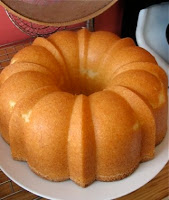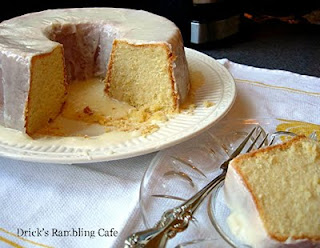a look at Mardi Gras Parade Floats
 |
| 'The Joker' from the Mobile's Mystic Stripers 2007 parade |
Mardi Gras 2014: All about Floats
Mardi Gras floats are like roaming theaters or better known as 'rolling tableaus.' Each parade tells a story centered around the theme chosen by that parading society. These works of art also provide a platform from where the crewe members toss their 'throws' to the spectators along the route. And the throws are tossed by the tens of thousands during every parade. Beads, toys, stuffed animals, doubloons, cups, even packaged snacks are but a few of the many items thrown to the denizens of revelers. Regardless of the Mardi Gras locale, floats are without a doubt the most visible marker of parades as these very complex creations 'float' down the parade route.A Brief History of Mardi Gras Floats
Around the mid-1800's, horse drawn carts and wagons became the norm of floats but before that, the carts were pulled by people. These early floats were accompanied with flambeaux carriers, often by young slaves and free men of color, and the torches lit the way for the floats and bands parading along the streets. Today, there are only a few organizations that use these torch carriers along the parade routes from Mobile to New Orleans. |
| Flambeaux carriers in a New Orleans parade |
Exactly What's on a Float?
Floats are built strong and yet made with the lightest materials possible. The cargo of each float is measured in tons not pounds. Each float may accommodate a dozen or more, some into the twenties, Mardi Gras crewe members and of course, along with their food and drink are very sizable amounts of 'throws' stored in bags. Many floats have hired help to feed the bags to them as their supply runs out, and it can run out in a hurry. Imagine a pillow case filled with trinkets. Now image shoveling this out to the masses of parade goers lining the streets. Most members say a bag will not last more than a five or ten minutes. Most parades are several hours long. And of course, being contained in an area, partying and drinking means a bathroom has to be on board too. Some of the larger floats have a den of sorts with a bartender inside the middle enclosed area. Floats are built to accommodate its members, haul an unbelievable amount of weight and made to withstand a good amount of abuse by its often rowdy members.How a Float is Constructed
Most all are two-tier structures, some three and a few having multilevel or platforms for the members to stand. Most all have a featured design work at the front and many have one also at its rear. There are a few floats called emblems, title and officers’ floats, that do not get a makeover, maybe touch-ups, as these remain the same year-end year-out.
| Float designer Craig Stephens, owner of Carnival Artists |
| Artist Robert Blanco refills paint in front of a 'Davy Jones' float |
The Nitty Gritty of Mobile's Floats
Another float builder in Mobile, Ari Kahn, says the floats in Mobile parades tend to be larger than those used in New Orleans, and change radically each year according to the theme of the parade. This means a constant flow of large papier mâché sculptures to attach to the float. He and most artisans start with a simple wooden or PVC pipe armature. To this, torn strips of corrugated cardboard saturated with a latex water-based contact adhesive is applied to build up the shape of the sculpture. One nice thing about this adhesive is that it's waterproof, he says. After drying and after the general shape is achieved, the sculptors will smooth out the surface with torn sections of thin chipboard which is also coated on both sides with the waterproof contact adhesive. The process of applying these layers goes quickly as there is no drying time in the sculpture itself. The final process involves an application of dry cardboard and chipboard and after that, they're ready to go to the finishing stages.| 'Sexy Escimo' from Northern Lights float |
Torn white or brown butcher paper is applied with wallpaper paste in layers to smooth out the surfaces and to give a finalized surface for painting. (See 'Sexy Escimo' photo) The paint most used is an ordinary exterior grade latex, one that is custom tinted with powdered pigments. A few of the societies Kahn has worked for are the Infant Mystics, the Mystic Stripers, the Knights of Revelry, the Order of the Polka Dots, the Order of LaShe’s.
Where a Float Goes to Rest
Floats are pulled from their dens or barns for one day each year, well most are as some are rented to other organizations after their initial debut. After the riders exist the floats, the huge 'stages' are escorted back to their respected warehouses known as dens or barns depending on the society. A few of these barns are open throughout the year for the public but most are secretly closed and only opened toward the Mardi Gras season for a 'barn party' by its members to view and load the floats.One well known company which is opened year-long to the public (for a fee) is Blaine Kern’s Mardi Gras World right across the river from the French Quarter in New Orleans. It is is a massive warehouse and prop shop that houses tons of floats used in New Orleans’ annual Mardi Gras parades. Of the many warehouses, the public can view the creation/design studios as well as the storage/maintenance facilities.
 |
| Blaine's 'Prop Shop' |
The dens and barns are where floats are stored through the off season, and then, months before Mardi Gras rolls around, they undergo an intensive process of refurbishment, and redesign. To some float companies, it is a year-long business. Each crewe will choose a new Mardi Gras theme for the coming year and the floats are then redesigned, painted, and upgraded to reflect that theme according to the specs of the designer's sketches. One of the most well known float designers is Brent Amacker of Mobile. Amacker is responsible for many memorial years of Mardi Gras.
| Amacker's 'Archie' original design drawing, Built by Steve Mussell's MIRTHCO, Inc. the float sculpture (above) stays pretty true to the drawing! |
 |
| Amacker's 'Northern Lights' featuring the 'Sexy Escimo' for Neptune's Daughters, 2009 |
| Artist Robert Blanco of Mobile paints a "Lord of the Rings" themed float 'Gandalf' |
 |
| Amacker's drawing for 'Sirens of the Sea' |
| Mystics of Pleasure's 'Sirens of the Sea' float on parade route in Orange Beach AL |
Note: Mobile societies are many times referred to as crewes while in New Orleans, they are known as krewes.
Acknowledgements: Credits and special thanks to: Sharon Steinmann, AL.com, Edgar Mater, Brentoons Media, Thomas Scoggins, Rusty Blazenhoff, Blaine Kern’s Mardi Gras World, Jonni Good, ultimatepapermache.com
~ ~ ~
Need Recipes to get in the MARDI GRAS spirit?
Try a few of my favorites:
Mobile's Bayoubaisse (Seafood Stew) with a look at Parades and Barn PartiesShrimp and Grits - two very different recipes
Gulf Coast Seafood Gumbo and a look at Mardi Gras street foods
Hearty Creole Grillades - Bayou cookery meets fancy Creole tastes
Chicken and Sausage Gumbo - Mardi Gras' #1 food
Sugar Cured Creole Ham - a double dose of southern glaze
Roast Beef for Debris Style Po-Boys - savory roast beef with delectable jus
Red Beans and Rice - the real deal with the favored New Orleans flavor



I found your post to be very interesting as I've never been to Mardi Gras.
ReplyDelete